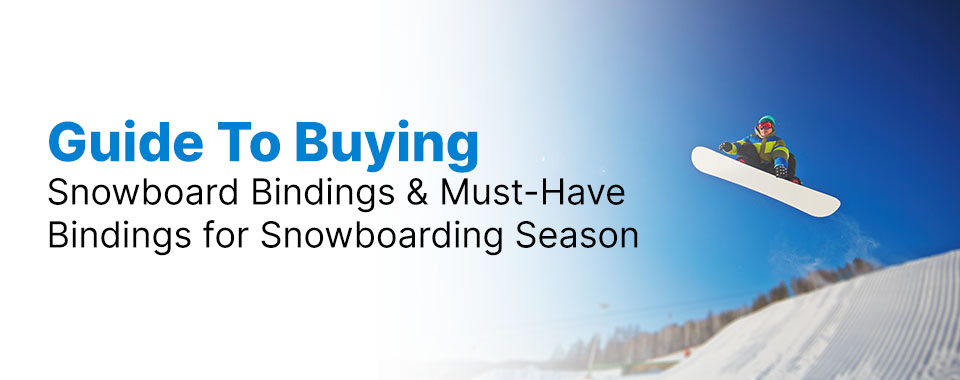 guide to buying the right snowboard bindings
guide to buying the right snowboard bindings
Guide to Buying Snowboard Bindings
Posted
by
Matt Gahman
on Friday, December 9, 2022
It's time to get ready for the winter season! With the colder months, there also comes snowboarding season. That means you need to prepare yourself for having fun in the snow by purchasing the best possible snowboard bindings for you. In this guide to buying snowboard bindings, we will go over the different types of snowboard bindings and a few must-have options for enjoying this winter's snowboarding season. Grab yourself a hot cup of coffee and prepare to gain all the knowledge you need to make your upcoming winter season full of fun outdoor activities.
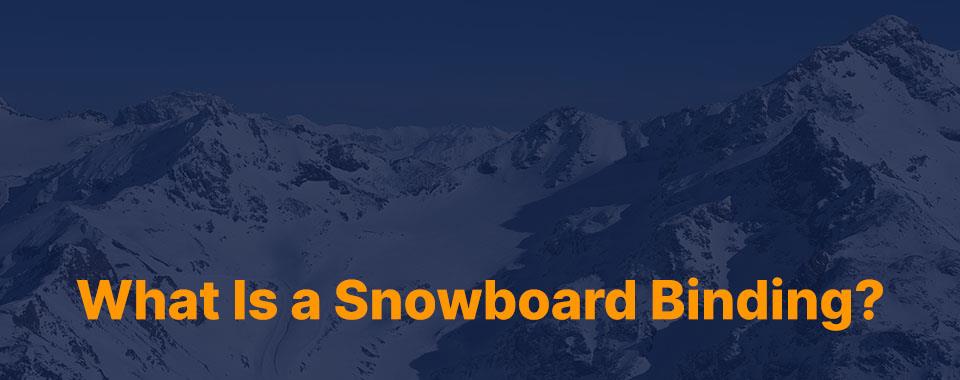
What Is a Snowboard Binding?
Snowboard bindings play a vital role in both safety and control when you are snowboarding. Snowboard bindings fit onto your board with a few screws and can easily be installed or removed. They include various straps, buckles and other parts that help secure your boots to your snowboard.
Unlike ski bindings, snowboard bindings don't have the ability to release your foot when you fall. This aspect, however, isn't a problem for snowboarders since both feet are secured on the same board.
With the right bindings, you can have the control needed to tighten those turns and whip down the hills with ease, which will help increase your skill level.
Different Snowboard Binding Sizes
Your snowboard bindings are the piece that secures you to your board. It's essential that you select the properly sized snowboard binding so you have a fun and safe adventure on your snowboard.
The two main aspects you should follow for finding the right size snowboard bindings is that the bindings should be the right size for your board and your boots.
Sizing your boots with your bindings is the first step for purchasing snowboard bindings. Bindings will range in size depending on the brand, but they typically follow small, medium and large sizing. Because there are different types of binding brands and boot brands, sizing across the industry is not universal. The best thing to do is talk to local snowboard shops about sizing or research measurements online to see if your current boots will fit their bindings.
Next, you'll need to size the snowboard bindings to your board. When your bindings are the right size for the board and for your boots, you can easily glide over the snow without digging into the ground or snagging anything on the trail. When bindings are too small for the board, you won't have as much control over your snowboard.
It's important that you buy your boots first, then your snowboard, then bindings. That way, every piece of equipment fits nicely.
Different Types of Snowboard Bindings
You should find the binding that's comfortable for you and works best with your riding style. You can select from two types of snowboard bindings — strap bindings and speed-entry bindings. Check out the difference between the two and how you can benefit from each type:
- Strap bindings: The strap bindings are the most common type of snowboard bindings on the market. They secure tightly with straps that crank or ratchet tight to ensure your boot is snug in place. The highback is sturdy, so you have the most control over your board when you're going down the mountain. You'll find this type of binding has optimal cushioning and support for your feet and ankles.
- Speed-entry bindings: The speed-entry bindings look similar to the other bindings, but they have a highback that reclines backward to allow your foot to enter the binding. This option is great for snowboarders who prefer an easier process of securing their boot and taking it out of the binding. These bindings are often a little heavier than strap bindings, but casual riders appreciate the convenience more for securing their boots.
- Step on technology: Like strap bindings, step on bindings have a similar base and back but no crank straps. You'll lock your boots in by the clips on the heel and side of your boot. These clips will secure your boots into your board, and they are a convenient type of binding for snowboarders.
Bindings for Certain Riding Styles
Whether you're a beginner or you've been snowboarding for years, purchasing bindings that mesh with your riding style can help you enjoy your ride down the mountains. Beginners may want bindings that are more comfortable and give your an easy ride. Intermediate to advanced snowboarders may prefer a stiffer and tighter binding that allows them to have more control over their board and cut through the snow efficiently.
Your riding style makes a big impact on the type of bindings you purchase. Selecting your riding style can help narrow down your selection of bindings:
- Freestyle: This style is best for snowboarders who perform spins, jumps and other park tricks. They allow you to move easily and land your jumps.
- All-mountain: This style is perfect for nearly every terrain. From parks to all-powder runs, these bindings can help you enjoy various terrains on the mountain.
- Powder: These bindings are stiffer, so snowboarders can have more control while cruising on deep powder.
- Freeride and splitboard: This binding is useful on rough, backcountry terrain. They are stiff and help you have more control over your board.
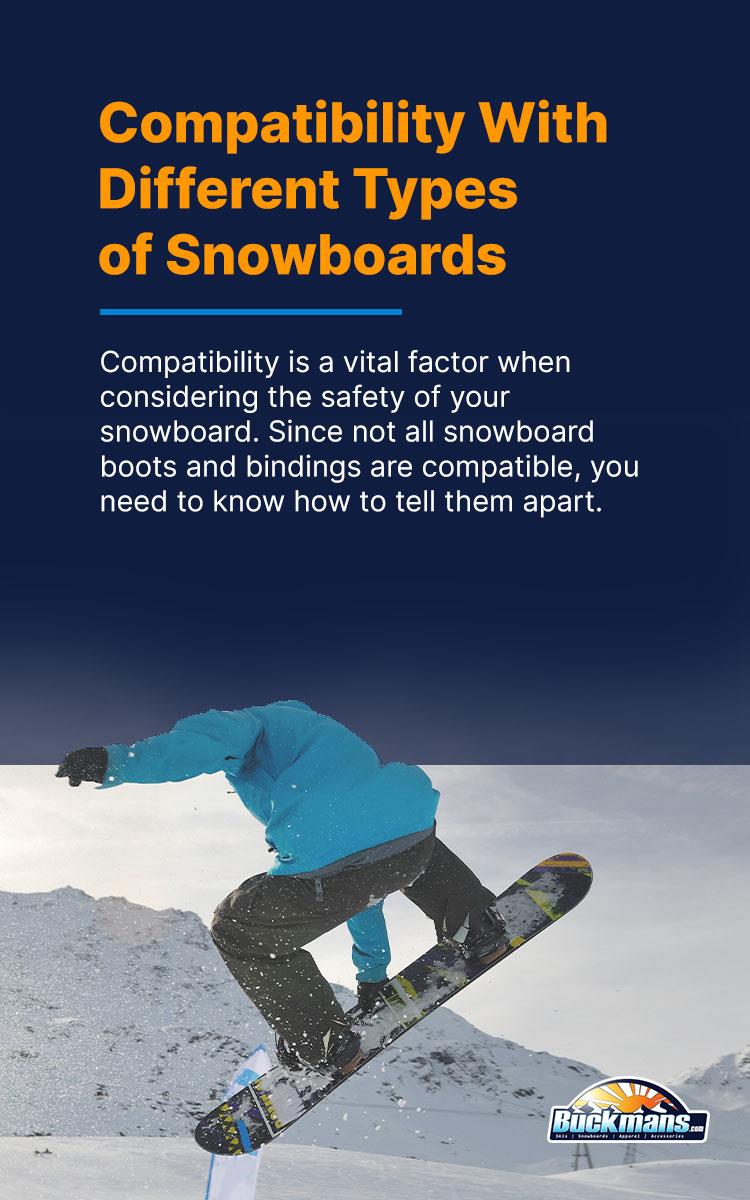
Compatibility With Different Types of Snowboards
Compatibility is a vital factor when considering the safety of your snowboard. Since not all snowboard boots and bindings are compatible, you need to know how to tell them apart. If you ignore the compatibility of your setup, you may be at a higher risk of injury. In some cases, it may not even be possible to correctly attach your bindings to the board.
Other aspects affect the release functionality, including improper maintenance, worn soles, dirt, salt and structural damage to the bindings. If you have new bindings that you want to pair with your old boots, make sure a professional makes adjustments properly for you so you know they are set up for safety. Because of different shoe sizes, there is a difference between junior norm and adult norm snowboard boots and bindings. However, the majority of snowboard gear is usually adaptable to your specifications. Before mounting your bindings, confirm you have compatible hardware made for your age, weight, size and skill level.
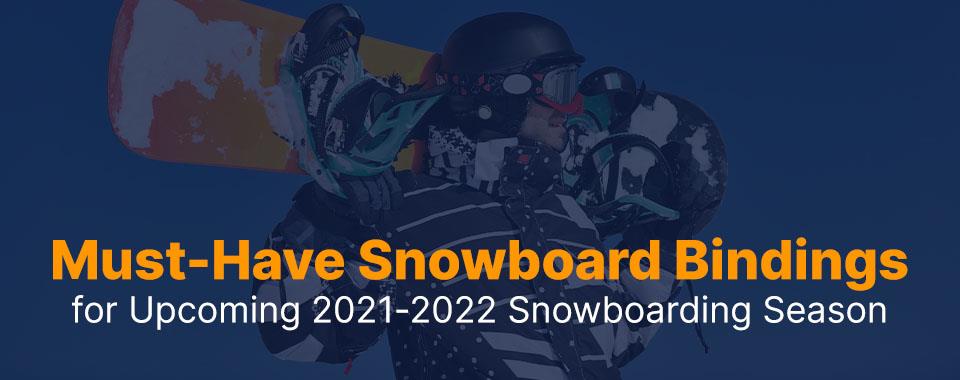
Best Questions to Consider When Buying Snowboard Bindings
If you're searching for the right snowboard bindings, check out the following questions and answers!
How Should I Size My Snowboard Bindings?
You should match your bindings to the size of your boot to give you adequate control and response while out on the slopes. Make sure to use the brand-specific sizing chart to find the best fit for your situation.
How Would I Prefer My Snowboard Bindings to Fit?
You're looking for a snug fit when you fit your bindings with your boots. So, the bindings should tightly grab your boots without pinching them or forcing them into place, giving you the comfort and maneuverability you deserve. Your boots should flex without wobbling or shifting and shouldn't hang excessively over your bindings.
For example, if you're a size eight boot, you'll want to find one that accommodates that size, ensuring a snug and secure fit.
What Type of Style and Flex Are Best?
The style and flex you prefer depend on your snowboard experience and the terrain you love to ride. The flex of your bindings should also match the flex of your boots.
If you're a beginner, it's probably better to stick with a soft to medium option, which provides a more comfortable and smoother experience. Advanced snowboarders, on the other hand, may benefit from a more rigid experience for precise control at higher speeds.
However, your needed flex will also change based on your activity. If you love to carve up deep powder, a stiffer option is probably best, whereas those using the terrain park might want a spongier type with more flexibility for jumps and rails.
What Bindings are Most Compatible With My Snowboard?
Your snowboard is likely one of four styles — 2x4, 4x4, 3D or Channel. 2x4 and 4x4 are among the most widely used options, while the 3D diamond style is unique to older Burton boards. The Channel system offers ease of use and versatile mounting capabilities with just a track and two screws per binding.
Nowadays, most bindings are compatible with various snowboard options, but it's essential to know which your board has.
Are Any Features More Important Than Others?
Snowboard bindings come with a variety of elements included. Focus on the following features to help you find the perfect binding:
- Highback: A vertical plate extending from the back of a binding to your lower calf supporting your heel during a turn.
- Straps and buckles: The straps and buckles are essential to the comfort and functioning of your bindings, keeping you locked in any conditions.
- Forward lean adjustor: This feature helps adjust the highback to fit your natural riding position.
- Cushioning: A crucial component that will provide you with more stability and relief during your sessions.
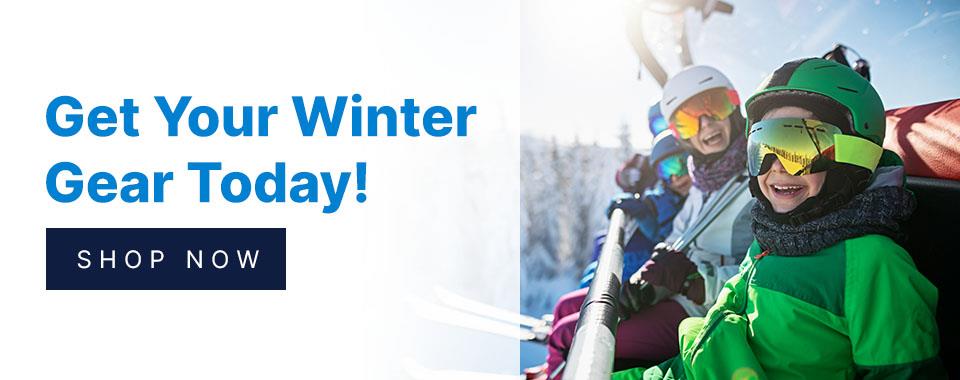
Get Your Winter Gear Today!
Buckman's Ski and Snowboard Shops is your one-stop shop for all your winter fun needs. We have all the snowboard bindings and boots you will need from the top brands you know and love. Our wide selection encompasses all ranges of riders, including youth, women and men's gear.
Whether you are a professional rider or a beginner, we have what you require to push your skills to the limits. You can also rent what you need from us if you are missing some critical pieces of equipment! Renting gear is perfect when you are unsure which products to buy and test them out before purchasing.
Shop with us today and get all of your gear to enjoy an epic winter mountain adventure!
Categories:
Snowboard Equipment
|
Top Winter Brands